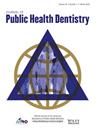How socioeconomic and structural barriers influence dental care among transgender people
Abstract
Background
While recent US policies restrict access to healthcare and resulting health disparities among the transgender community, little is known about oral health access and utilization among this population. This study assessed self-reported access to dental care among transgender adults living in the United States.
Method
The study sample included 1,284,526 observations representing a weighted population of 290,000,163 from Behavioral Risk Factor and Surveillance Survey (BRFSS) datasets. Transgender identity was dichotomized and tested for association with having a dental visit in the past year. Pearson chi-square statistics were computed for associations and multivariate logistic regression assessed the odds of seeing a dentist in the last year.
Results
Nearly all socioeconomic and healthcare access covariates were associated with transgender identity. A significantly smaller proportion of transgender respondents reported established employment graduating high school, income over $50,000, non-Hispanic White racial and ethnic identities, and a past-year medical checkup (all p < 0.01). In all three models and across all analyses, transgender respondents had significantly lower odds of having seen a dentist in the past year, compared to cisgender people.
Conclusions
To date, no research, aside from the present study, has assessed connections between transgender identity and oral healthcare access. The results of this analysis are consistent with other healthcare disparities that transgender people experience in that a smaller proportion of transgender respondents saw a dentist in the last year compared to cisgender respondents. Implications for establishing a foundation in future research to explore oral health access, utilization, and policy recommendations are discussed.

 求助内容:
求助内容: 应助结果提醒方式:
应助结果提醒方式:


